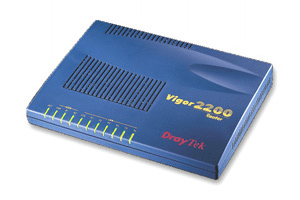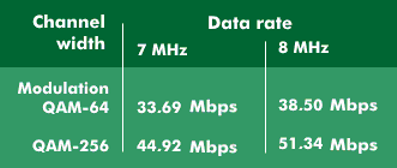cable modem (CM)
Since the beginning of the 1990s, a total of four working groups have been concerned with standardizing data transmission via high- frequency cables: IEEE 802.14, the CableLabs DOCSIS working group, the DigitalAudio and Video Council( DAVIC) and the Digital Video Broadcasting( DVB) project group.
In addition, U.S. cable operators joined together in a consortium, the Multimedia Cable Network System (MCNS), which focused on its core competencies and published DOCSIS.
Functionally, cable modems( CM) are modems for cable distribution networks and provide end users with bidirectional high-speed access to the corresponding services. They form an alternative to broadband technologies such as DSL.
Cable modems are designed with a forward and return channel and achieve a bandwidth of 8 MHz in the downstream, from the head end to the subscriber, in Europe. With 64QAM modulation, data rates of 38.5 Mbit/s can be transmitted over this bandwidth, and up to 51.3 Mbit/s with 256QAM. At the bandwidth of 6 MHz used in the USA, transmission rates of 31 Mbit/s are achieved with 64QAM and 41 Mbit/s with 256QAM.
Upstream, transmission rates of up to 10 Mbit/s are available for the return channel, usually using quadrature phase shift ke ying( QPSK).
There are modems with symmetrical transmission characteristics for the outward and return channels and others with asymmetrical transmission characteristics. To directly support LAN applications, the transport protocols correspond to those in local area networks.
In addition, cable modems handle the adaptation ofsignaling from the subscriber-side terminal to the channel structure of the cable distribution network.


